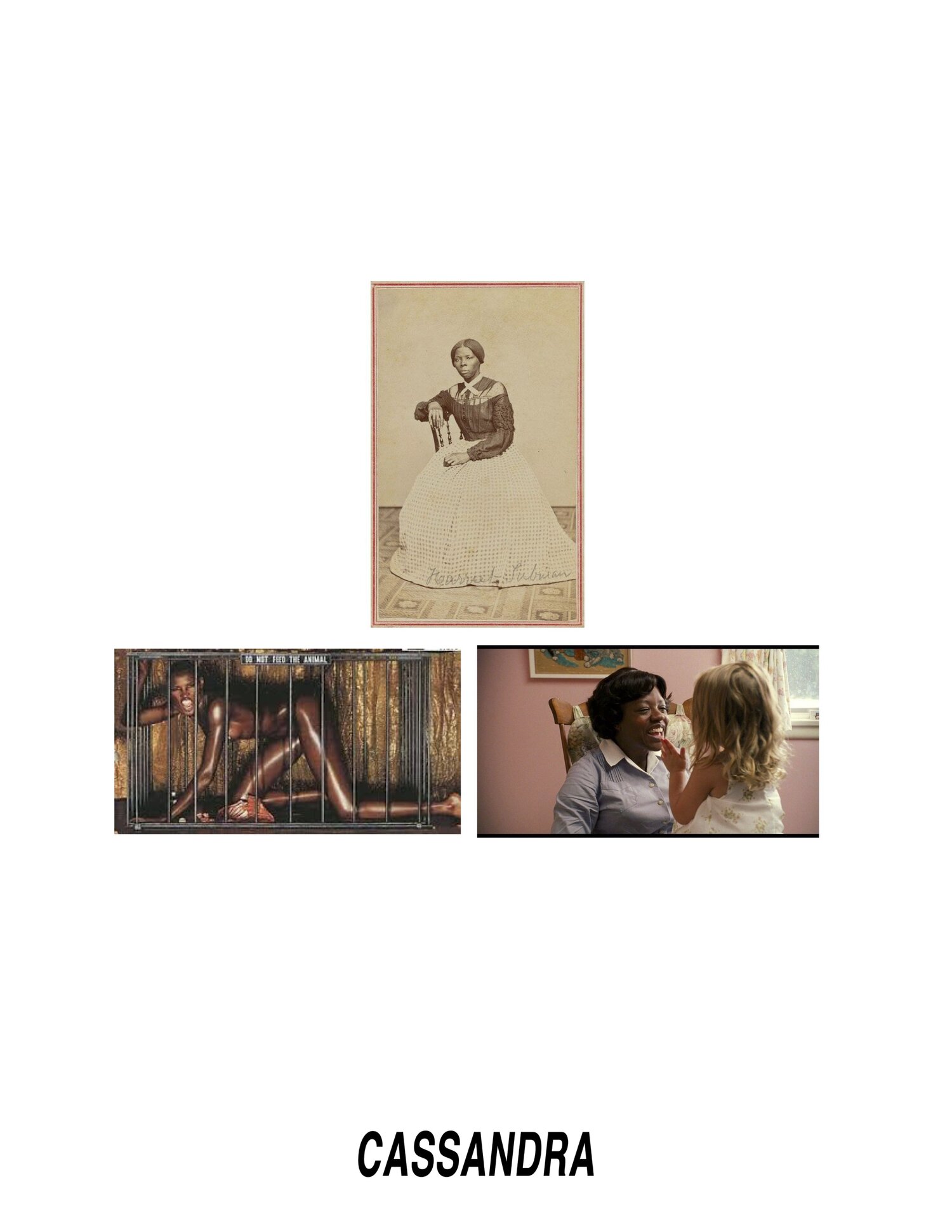
CASSANDRA: Reader on Misogynoir
Title: Reader on Misogynoir
Editor: Kandis Williams
Publisher: Cassandra Press
Publication Year: 2020
https://cassandrapress.org/B1-Readers
Contents:
Moya Bailey, “Explanation of Misogynoir,” Gradient Lair (blog).
David Pilgrim, “The Sapphire Caricature,” Ferris State University.
David Pilgrim, “The Mammy Caricature,” Ferris State University.
David Pilgrim, “The Jezebel Caricature,” Ferris State University.
Carolyn M. West, “Developing an ‘Oppositional Gaze’ Toward the Images of Black Women,” in Lectures on the Psychology of Women (Long Grove, IL: Waveland Press, Inc., 2018).
Carolyn M. West, “Mammy, Sapphire, and Jezebel: Historical Images of Black Women and Their Implications for Psychotherapy.,” Psychotherapy: Theory, Research, Practice, Training 32, no. 3 (1995): 458-466.
Femmesurrection, “Producing Deviants: Black Women, Crime, and Capitalism in Reconstruction America,” Praxis Research (2015).
Maria Dietrich, “The I and the Other: Ottilie Assing and the Douglasses” in Love Across Color Lines (1999).
Rosetta Douglass Sprague, “Anna Murray-Douglass-My Mother as I Recall Her,” The Journal of Negro History 8, no. 1 (1923): 93–101.
Eric Gardner, “‘This Attempt of Their Sister’: Harriet Wilson’s Our Nig from Printer to Readers,” The New England Quarterly 66, no. 2 (1993): 226–46.
Sonja C. Tonnesen, “Commentary: “Hit It and Quit It”: Responses to Black Girls’ Victimization in School,” Berkeley Journal of Gender, Law & Justice 28 (2013).
Jennifer Wriggins, “Rape, Racism, and the Law,” Harvard Women’s Law Journal (1983).
Marilyn Yarbrough and Crystal Bennett, “The Newest Siblings: Cassandra,” Race, Racism and the Law, April 1, 2012.
Aimee Wodda and Vanessa R. Panfil, “‘Don’t Talk to Me About Deception’: The Necessary Erosion of the Trans* Panic Defense,” Albany Law Review 78 (2015).
Catherine Olga Jacquet, “‘It Wasn’t the System that Set Me Free. It Was the People:’ The Joan Little Rape-Murder Case” in Responding to Rape: Contesting the Meanings of Sexual Violence in the United States, 1950-1980 (dissertation, 2012).
Patricia J. Williams, “The Pain of Word Bondage (A Tale with Two Stories),” in The Alchemy of Race and Rights: Diary of a Law Professor (Cambridge: Harvard University Press, 1991).
E. Frances White, “Introduction,” in Dark Continent of Our Bodies: Black Feminism and the Politics of Respectability (Philadelphia: Temple University Press, 2001).
Carina E. Ray, “From Indispensible to ‘Undesirable’: African Women, European Men, and the Transformation of Afro-European Power Relations in the Gold Coast,” in Crossing the Color Line: Race, Sex, and the Contested Politics of Colonialism in Ghana (Athens, OH: Ohio University Press, 2015).
Sandra Ponzanesi, “Beyond the Black Venus: Colonial Sexual Politics and Contemporary Visual Practices” (2017).
Mireille Miller-Young, A Taste for Brown Sugar: Black Women in Pornography (Duke University Press, 2014).
Sesali Bowen, “Bitches Be Like...: Memes as Black Girl Counter and Disidentification Tools” (dissertation, 2016).
Mark Christian Thompson, Black Fascisms: African American Literature and Culture between the Wars (Charlottesville, VA: University of Virginia Press, 2007).
Evelynn M. Hammonds, “Toward a Geneology of black Female Sexuality: The Problematic of Sexual Silence,” (2017).
Hortense J. Spillers, “Mama’s Baby, Papa’s Maybe: An American Grammar Book.” Diacritics 17, no. 2 (1987): 65–81.
Kimberlé Williams Crenshaw, “The Hidden Toll of Race on Black Girls” in Black Girls Matter: Pushed Out, Overpoliced, and Underprotected (African American Policy Forum).
Deirdre Cooper Owens, “Historical Black Superbodies and the Medical Gaze” in Medical Bondage: Race, Gender, and the Origins of American Gynecology, (University of Georgia Press, 2017): 108–22.
Arline T. Geronimus and John Bound, “Black/White Differences in Women’s Reproductive-Related Health Status: Evidence From Vital Statistics,” Demography 27, no. 3 (1990): 457–66.
Audre Lorde, “Introduction,” in The Cancer Journals (New York, NY: Penguin Books, 2020).
Danya E. Keene, et al., “Leaving Chicago for Iowa’s ‘Fields of Opportunity’: Community Dispossession, Rootlessness, and the Quest for Somewhere to ‘Be OK.’” Human Organization 69, no. 3 (2010): 275–84.
Katherine McKittrick, “On Plantations, Prisons, and a Black Sense of Place,” Social & Cultural Geography 12, no. 8 (2011): pp. 947-963.
Bani Amor, “Misogynoir and Climate Change: Part IV-How Disaster Relief Fails Black Women” (December 16, 2016).
Nancy Krieger and Mary Bassett, “The Health of Black Folk: Disease, Class, and Ideology in Science,” Monthly Review 38 (1986).
Ian Baucom, “Specters of the Atlantic,” The South Atlantic Quarterly 100, no. 1 (Duke University Press: 2001): 61-82.
This item is available for checkout.